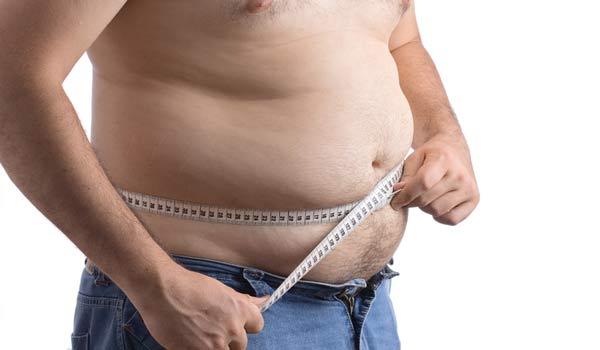
The type of fat you eat may affect not only your heart disease risk, but also where on your body you pack on extra pounds, new research suggests.
People who ate extra amounts of saturated fat tended to accumulate fat around their waistlines and livers. Meanwhile, people who consumed extra amounts of polyunsaturated fat, which typically comes from vegetable oils, had trimmer waistlines, a new study found.
Fat around the waistline, or "belly" fat, and fat near the liver are thought to be particularly unhealthy, and have been linked to increased risk of diabetes and heart disease.
The new findings reinforce current dietary guidelines, which say people should eat more polyunsaturated fats from vegetable oil and fatty fish, and fewer saturated fats from red meat and butter, said study co-author Ulf Riserus, a clinical nutrition professor at Uppsala University in Sweden.
Belly fat danger
Research has tied carrying extra pounds around the mid-section to metabolic syndrome, a collection of symptoms linked to heart disease and diabetes. Those symptoms include high blood pressure, low HDL or "good" cholesterol, and high blood sugar.
It's unclear exactly why belly fat affects health risks to such an extent, but one theory suggests that liver and belly fat may be more responsive to stress hormones, causing the release of more fatty acids into the liver. That, in turn, may make it more difficult for the liver to respond to insulin, the hormone that regulates blood sugar, Riserus said.
Sign up for the Live Science daily newsletter now
Get the world’s most fascinating discoveries delivered straight to your inbox.
Many studies have linked diets high in saturated fats with higher heart-disease risk, but the reason for this link wasn't clear. [7 Foods Your Heart Will Hate]
Fat changes
To understand more about the link between saturated fats and heart disease, Riserus and his colleagues gave 39 young men and women a 750-calorie muffin every day, to eat in addition to their normal diets. Half of the muffins were made with palm oil, a saturated fat, whereas the rest were baked with sunflower oil, a polyunsaturated fat.
After seven weeks, the researchers measured the fat that the participants had accumulated during the study, as well as their total body fat. Researchers made these measurements using magnetic resonance imaging (MRI) and an air-displacement plethysmograph, which registers a person's overall density and volume.
Both groups of subjects put on roughly the same number of pounds, but those who ate the saturated fat-filled treats tended to accumulate that weight around the stomach and visceral organs, according to the study. These individuals also put on much less muscle mass than those who ate the unsaturated fat muffins.
Different gene expression
The team also measured gene expression in abdominal subcutaneous fat, which is fat located just under the skin.
"We found that polyunsaturated fats 'switched on' some genes that enhance energy dissipation, limit body fat deposition and may promote muscle mass gain," Riserus told Live Science.
It's not clear why unsaturated fats may promote a healthier accumulation of fat, but the study hints that fat in different parts of the body may activate different genes that may favor one type of fat deposition over another, Riserus said.
Some early evidence suggests the foods themselves could affect how the body processes nutrients, said study co-author Fredrik Rosqvist, a doctoral candidate in public health and caring sciences at Uppsala University.
So it's possible that the body could process saturated fats differently when they're consumed in a muffin versus a plate of bacon, Rosqvist said.
The findings were published online Feb. 18 in the journal Diabetes.
Follow Tia Ghose on Twitter and Google+. Follow Live Science @livescience, Facebook & Google+. Original article on Live Science.

Tia is the managing editor and was previously a senior writer for Live Science. Her work has appeared in Scientific American, Wired.com and other outlets. She holds a master's degree in bioengineering from the University of Washington, a graduate certificate in science writing from UC Santa Cruz and a bachelor's degree in mechanical engineering from the University of Texas at Austin. Tia was part of a team at the Milwaukee Journal Sentinel that published the Empty Cradles series on preterm births, which won multiple awards, including the 2012 Casey Medal for Meritorious Journalism.









